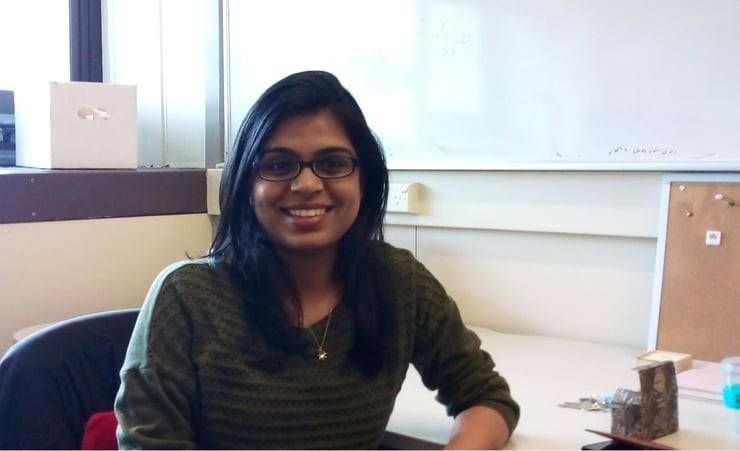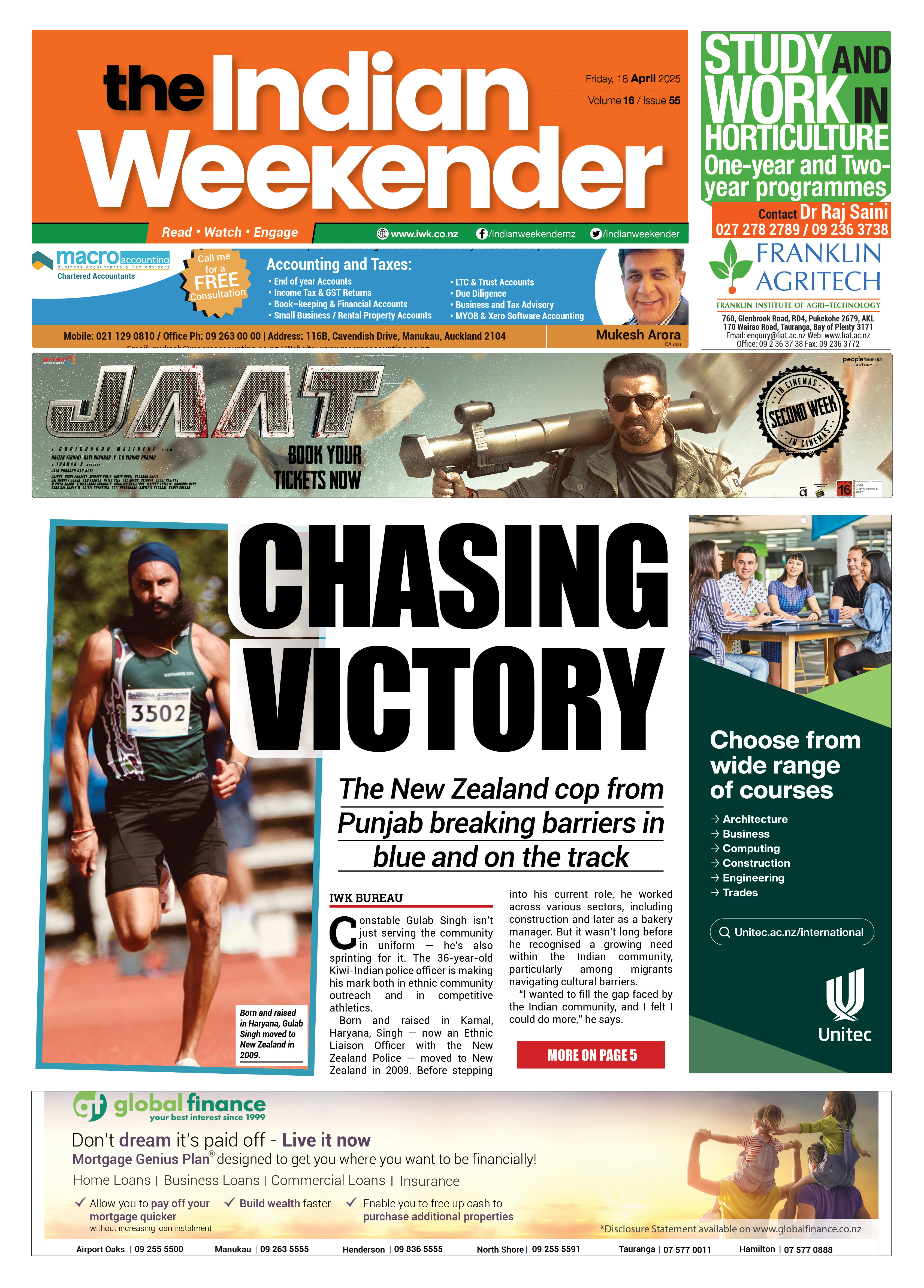Meet Dr Shalini Divya, innovator and visionary for a greener world

Dr Shalini Divya is the CEO of the Tasmanion, an NZ based battery manufacturing company co-founded by her. She won the prestigious Breakthrough Innovator Award at the annual KiwiNet Awards 2021 for her pioneering research into aluminium ion batteries as a PhD student at Victoria University, Wellington. In an exclusive interview, she spoke to Venu Menon about her vision for her company and the high points of her research while at Victoria University. Excerpts:
Q. How did you get interested in researching batteries?
A. I came to Victoria University to get my PhD in 2017. I had been applying for PhD scholarships all over the world. I found Prof. Thomas Mann (Research Supervisor, Victoria University) who had this amazing project on batteries. I had done my Masters, too, in energy storage devices. The Victoria doctoral scholarship was the first scholarship I was offered, and New Zealand being a beautiful place, I accepted the offer. My research area was aluminium ion batteries.
Q. Tell me about the eureka moment in your research.
A. My work was around the cathode of the battery, while my colleague was working on the electrolyte. Then, in my second year, I found this magic cathode material. I was working in the lab. I had tested about 60 to 70 cathode materials. One day, I find this amazing performance from this particular cathode material .The results were very good. We had out performed most of the cathode materials in the Aluminium battery research. I immediately texted Thomas. He came running down with his coffee cup. No food or beverage is allowed in the chemistry lab. But he did not care. He just rushed in. He saw the results and said “wow , this is great”. This was the eureka moment for Thomas and me.
Q. What happened next?
A. The first thing that came to our minds was to publish the results. That is what PhD students aim for. But Thomas had the idea of patenting it. That’s when the University’s TTO (Tech Transfer Office) Wellington Uni Ventures approached us. They helped us with the due diligence process and the market evaluation, and came back with a positive report that there is a market for aluminium batteries and we should file a patent.
Q. So who has the patent? The University or yourself?
A. The University has the patent. But we got it licensed to the company (Tasmanion). If you are a PhD student and you are filing a patent, that patent automatically belongs to the University. Thomas and I are the inventors, but the benefits go to the University.
Q. Is that when you started your company, Tasmanion?
A. I wanted to start a company. I wanted to be the face of that company, and I wanted to be the CEO. So the University licensed us the IP (intellectual property rights).
Q. Does the University have a stake in your company?
Initially it did. Then they transferred it to another company.
Q. How is Tasmanion doing as a company? Have you started making and marketing your product?
A. Once the investors’ money came in, we started ordering the equipment. The University has given us this office space, with rental costs, of course. We are in the process of building the prototype. Only after that can we enter the market.
Q. Is this a niche market or are there other competitors?
A. There is an aluminium battery company in Australia. But NZ does not have any battery manufacturing companies. There is one, but it focuses on making lead acid batteries. NZ is focused on reducing the carbon footprint. So, making batteries, or at least retaining the IP here, allows NZ to be recognised around the world. The big battery companies like Tesla, Samsung and Toshiba have their research and development departments somewhere in Europe. Our plan for Tasmanion is to retain the R & D sector here in NZ no matter what industry we go to (be it stationary storage or E – bikes or the drones sector). We’re not talking about mass manufacturing the batteries here , but we want to build the prototype here and retain the technical know-how and skillset.
Q. What is the main difference between your product (aluminium battery) and the standard lithium battery?
A. Firstly, aluminium ion batteries are very safe. They don’t explode. That is because of their chemistry. We are not using flammable materials in the battery. The other major reason is that the raw materials involved in making lithium batteries, such as lithium, nickel and cobalt, will become scarce and in short supply. These days, lithium batteries are used for everything. Cars, cell phones , laptops, e-scooters , cameras or any portable electronic device you can think of, use lithium-ion batteries. But, 20 years from now, there will not be enough raw materials to cater to that demand for lithium ion batteries. So it is important that you focus lithium batteries to just electric vehicles. Why? Because the switch to electric vehicles will ensure a greener world. So, let’s leave lithium-ion batteries to electric vehicles (since electrification of the transportation sector is the need of the future), so that we will not be short of lithium batteries for that sector, and let us leave the other industries to other battery technologies (such as aluminium, sodium, etc) .
Q. Apart from lithium being an exhaustible resource, is there any other reason against the use of lithium batteries?
A. Cobalt, which is an important raw material in making lithium ion batteries, is unethically mined. Chile is the main country that cobalt is sourced to. And the mining industry in Chile uses child labour. Big companies that manufacture lithium ion batteries, such as Apple and Samsung, get their cobalt from Chile. So it is important for big companies to use materials that are ethically mined. Also, lithium itself is a rare material. That is why it is important to focus on materials such as aluminium, which is abundantly available.
Q. Is India a market you are looking at?
A. Not right now. But it is in the back of my head. My vision is to use Tasmanion batteries for stationary storage, particularly in behind-the-meter applications. In developing countries such as Africa, India and Southeast Asia, where you have solar panels, instead of storing that energy from solar power into harmful batteries such as lead acid or expensive batteries such as lithium ion , that is where aluminium ion batteries can enter. But all that must wait till we build the prototype battery.
Q. When will the prototype be ready?
A. Two years, at least.





